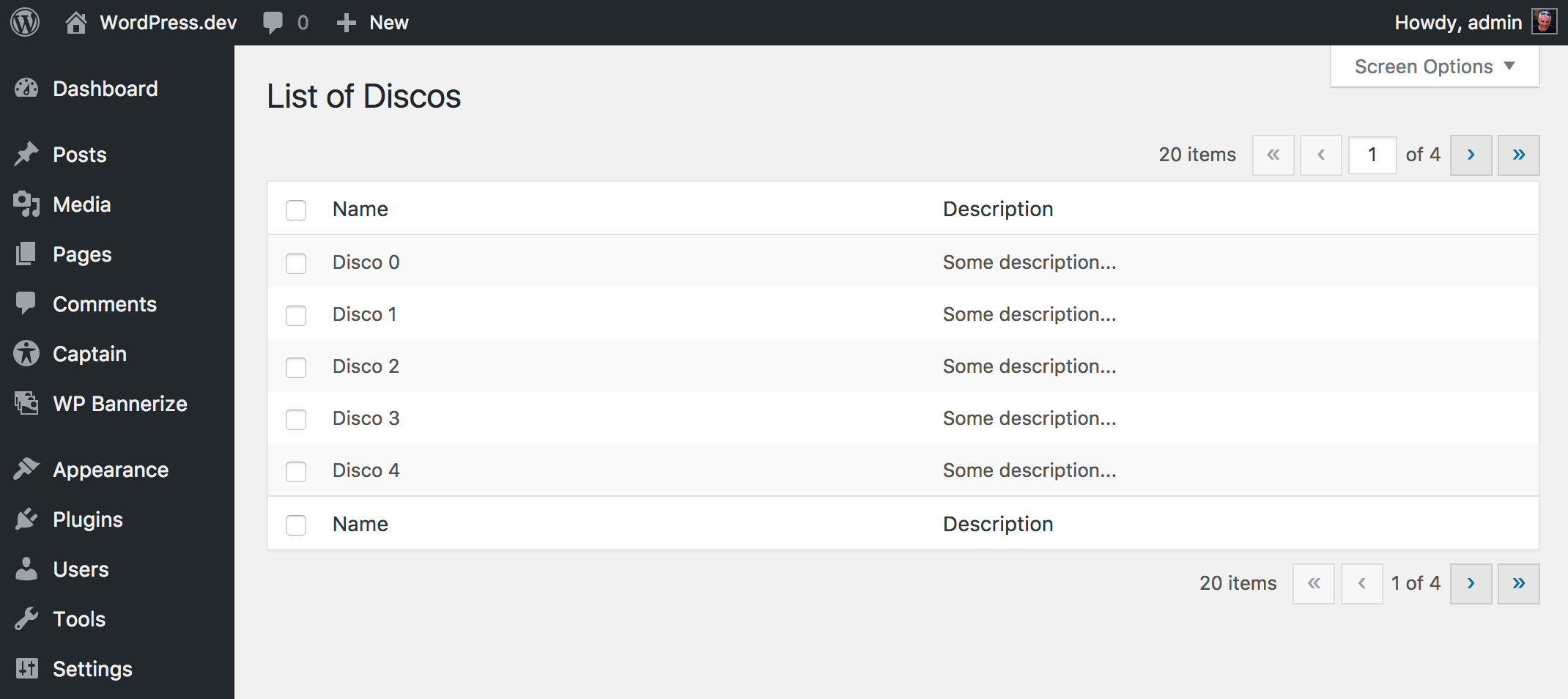A fluent implementation of WordPress WP List Table for WP Bones
You can install third party packages by using:
$ php bones require wpbones/wptables
I advise to use this command instead of composer require because doing this an automatic renaming will done.
You can use composer to install this package:
$ composer require wpbones/wptables
You may also to add "wpbones/wptables": "^1.0" in the composer.json file of your plugin:
"require": {
"php": ">=5.5.9",
"wpbones/wpbones": "~0.8",
"wpbones/wptables": "~1.0"
},and run
$ composer install
You can use WP Tables either like subclass or like fluent class instance.
As subclass class instance you may create a your own class as show below:
<?php
namespace WPKirk\Http\Controllers;
use WPKirk\WPTables\Html\WPTable;
class ExampleTable extends WPTable
{
protected $name = 'Discos';
public function getColumnsAttribute()
{
return [
'id' => 'Name',
'description' => 'Description',
];
}
public function getItems( $args = [] )
{
$fake = [];
for( $i = 0; $i < 20; $i++ ) {
$fake[] = [
'id' => "Example {$i}",
'description' => 'Some description...'
];
}
return $fake;
}
}In your view controller you have to use the load method in order to register the screen options:
...
public function load()
{
ExampleTable::registerScreenOption();
}
public function index()
{
$table = new ExampleTable();
return WPKirk()
->view( 'dashboard.table' )
->with( 'table', $table );
}
... In your ExampleTable you may override:
public function getCheckBoxValueAttribute( $item )
{
return $item[ 'my_colum' ];
}
// or
public function getCheckBoxColumnNameAttribute()
{
return 'my_colum';
}This will be the value used in the checkbox value.
If you like use the WPTable as fluent instance, you have to set the columns twice.
...
public function loadFluentExample()
{
WPTable::name( 'Books' )
->columns(
[
'id' => 'Name',
'description' => 'Description',
]
)
->screenOptionLabel( 'Rows' )
->registerScreenOption();
}
public function indexFluentExample()
{
$items = [];
for ( $i = 0; $i < 20; $i++ ) {
$items[] = [
'id' => "Book {$i}",
'description' => 'Some description...',
];
}
$table = WPTable::name( 'Books' )
->singular( 'Book' )
->plural( 'Books' )
->columns(
[
'id' => 'Name',
'description' => 'Description',
]
)
->setItems( $items );
return WPKirk()
->view( 'dashboard.table' )
->with( 'table', $table );
}